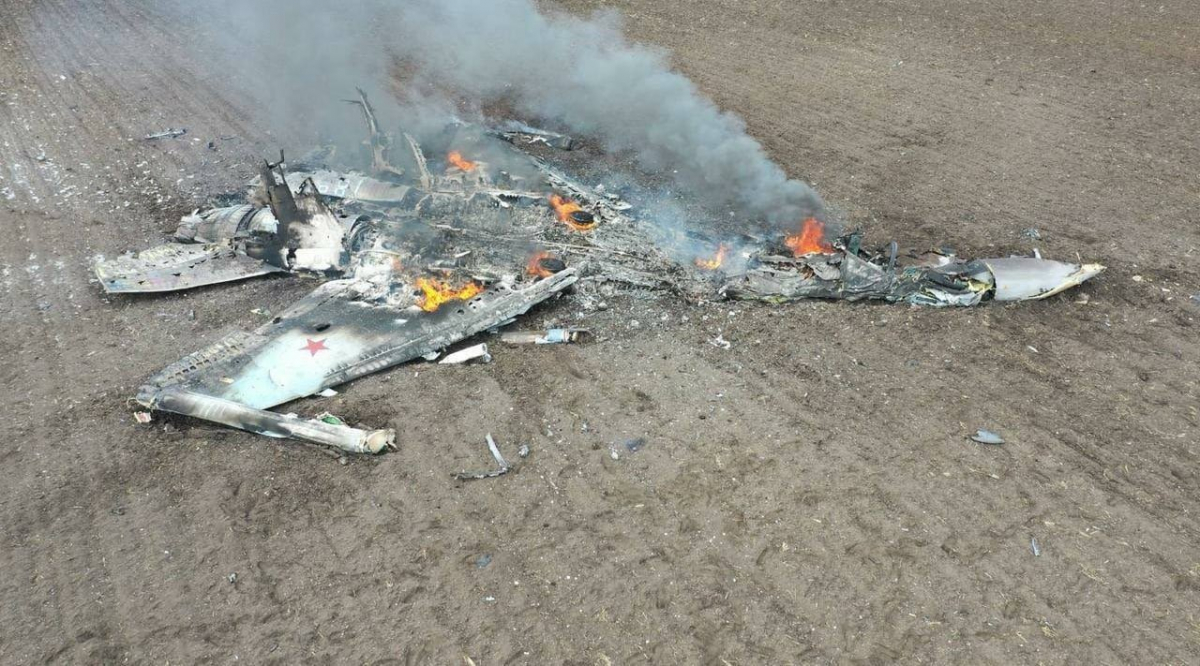Russian air cover in Ukraine seems to be gradually decreasing: Russian fighters remain over Russian lines or even in Russia or Belarus. But on several occasions, fighter aircraft have raided Ukrainian positions. As a result, on 24 September alone, four modern fighter aircraft were shot down by the Ukrainians.
Reduction of Russian aircraft over Ukraine
Since April, the Russian air force has not gone beyond the front line, having failed to overcome the Ukrainian air defence. In addition to the equipment available to the latter since the Soviet era, some of which has been modernised since 2014, it has received ever more numerous and effective equipment, which will soon be reinforced by the deployment of NASAMS systems, known in particular to protect the White House in Washington. The Ukrainian forces still have long and medium range anti-aircraft batteries, and Russian aircraft flying over the front line have to fly at low or even very low altitude (not to mention the lack of precision ammunition). But here too, the Ukrainian anti-aircraft defence is well supplied. Thousands of MANPADS, such as the Stinger or Grom (very short-range anti-aircraft missile launcher fired from the shoulder), are present all along the front line. In fact, the Ukrainians seem to have created a deep mesh of MANPADS, allowing them to create a multilayered defence on a larger scale.
But the situation deteriorated further from the end of the summer onwards, with a gradual disengagement of the Russian air force, including from the front lines. Repeated Ukrainian attacks on Russian air bases in Crimea and Belarus not only resulted in the destruction of more than a dozen aircraft still on the ground (more information in this article), but also forced Russia to evacuate a number of aircraft, including the entire Su-35 fleet deployed in Crimea, the most modern aircraft available in the Russian Air Force. In the face of September's major offensives, a "meme" was widely shared on the internet: where has the Russian Air Force gone?
The answer came on 24 September, with a marked return of fighters to stop a Ukrainian offensive in northern Donbass. No less than four fighters were shot down on the day, only for the aircraft for which images are available on the internet: two Su-30s, one Su-34 and one Su-25. At the beginning of October, in the Kherson region, the Russian soldiers, desperate for air support and unable to communicate on their communication networks (jammed by the Ukrainians), even launched desperate calls for help on social media... In vain...
Unlike the Ukrainians, who have plenty of spare parts thanks to deliveries from former Eastern Bloc countries, Russian aircraft seem to suffer from a lack of maintenance. Thus, the losses of Russian fighters out of combat seem to multiply; after an engine failure on takeoff of a Su-25 filmed on September 12, a Mig-31 loaded with all its ammunition crashed at the end of the runway at the Belbek air base (Crimea) on October 1.


Explanations of graphs
Ukrainian losses are particularly concentrated in attack or bomber aircraft. This is a consequence of the increase in air operations following the offensives and the decrease in the Russian air-to-air ban. However, these losses are decreasing over time with the introduction of AGM-88 HARM air-to-ground anti-radar missiles. The SEAD (destruction of enemy air defences) missions of the MiG-29s, but also of the Ukrainian Su-27s, make it possible to destroy the Russian anti-aircraft network and to open gaps in which the aircraft can support the ground troops.
On the Russian side, the losses are also concentrated around the aircraft supporting the ground troops. The numerous images presented on social networks confirm that many of these aircraft are also destroyed by Ukrainian anti-aircraft defences, as described at the beginning of this article. However, unlike the Ukrainian aircraft shot down, the Russian losses also include recent generation or modernised aircraft; Ka-52 and Mi-28 helicopter gunships or Su-30, Su-34 and Su-35 fighter jets. Finally, and as already explained in numerous articles, Russian SEAD missions appear to be ineffective from the very beginning of the war (with a low number of SEAD missions despite a known and well-armed Ukrainian anti-aircraft defence).
The losses are even more impressive on the ground; since 24 February, the Russians have lost more than 1,200 battle tanks, or just over 40% of its tank mass (more in this article).

